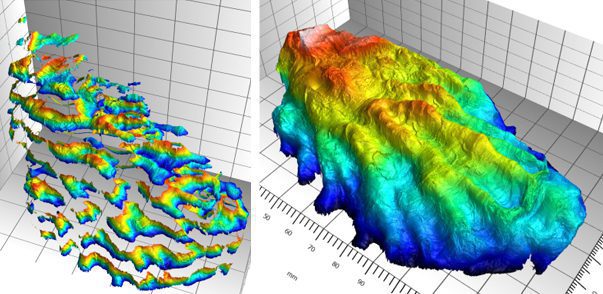
Conchology Topography Measurement Using 3D Profilometry
Conchology topography, by scanning the whole surface of an oyster shell, the Nanovea HS2000 Line Sensor will display its ability to work with large samples with abnormal geometries. Reflectivity, transparency, and angles do not affect the data collected with our technology, making 3D Non-Contact Profilometry ideal for all types of samples. Another difficulty that lies with profiling an oyster shell lies in its lack of flat base. Samples typically needs to be securely mounted to the stage to minimize wobbling as the stage move. This usually requires additional sample preparation or fixtures to be used. The smooth air bearing stages on the Nanovea HS2000 Line Sensor, however, drastically minimizes stage noise. Its motorized control of the x, y, and z stages also allows for ease in extending varying height measurement. The extended measurement shown in this study, allows our instrument to capture a full surface that is beyond its pen height range limits (approximately 4mm).
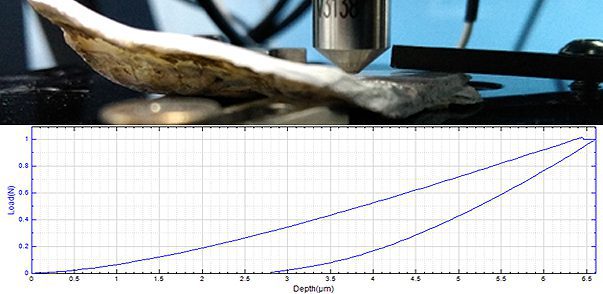
Biological Mechanical Properties of Oyster Shell
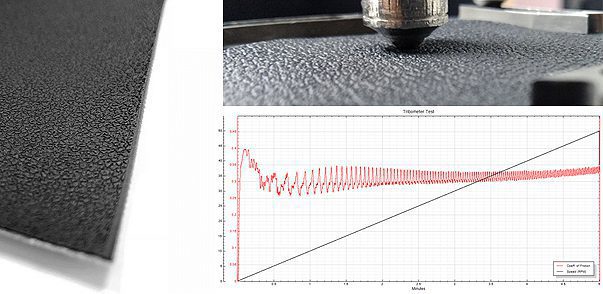
Leather Coefficient of friction Using Tribometer
Leather friction (COF) is quite important for leather since it can be used to characterize properties such as slip resistance, finish and material degradation. For leather used in footwear, the slip resistance must be sufficiently high. Slip resistance can be characterized by observing the static COF and dynamic COF with a Tribometer. COF also determines how much friction is produced when rubbing between two surfaces occur. This can be used to determine the aesthetic quality and durability of the leather finish when applied to clothing, tooling, and upholstery.
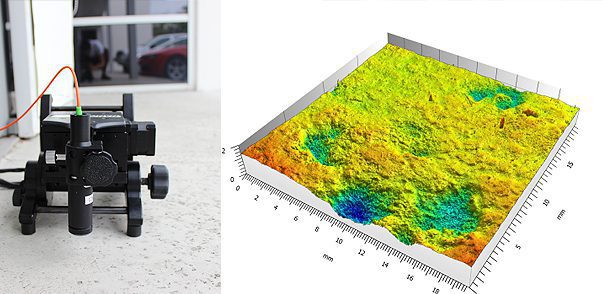
Concrete Roughness Using Portable 3D Profilometry
Measurement of nonconventional samples is difficult mainly due to problems mounting the sample onto a stage. For Nanovea’s JR25, the sample does not need to be mounted; it just has to remain unmoving. This means large objects such as walls, cars, or machines can be easily scanned. Its compact size makes it portable as well as diverse. It can tilt its pen sensor at an angle which makes it ideal in measuring samples that are not flat and have difficulties exposing its area of interest to a scanning probe. Since the 3D Non-Contact Profilometer uses axial chromatism technology, it can also measure any surface with minimal sample preparation. Nano to macro heights can be measured with zero influence from sample reflectivity, transparency, and curvature. The flexibility and portability of Nanovea JR25 3D Non-Contact Profilometer makes measuring a larger range of samples simpler than compared to conventional profilometers.
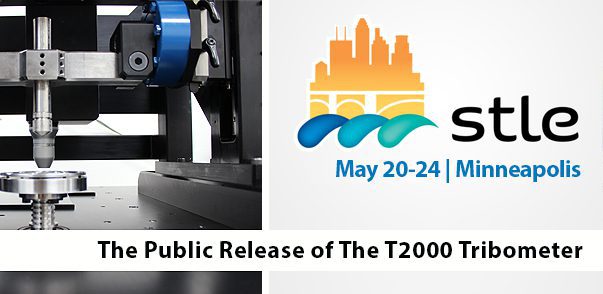
STLE 2018
Tribology testing will change forever next week. Come visit us at the 73rd STLE 2018 Annual Meeting & Exhibition, May 20-24, Minneapolis, Minnesota. Witness the live public release of the T2000 Tribometer!
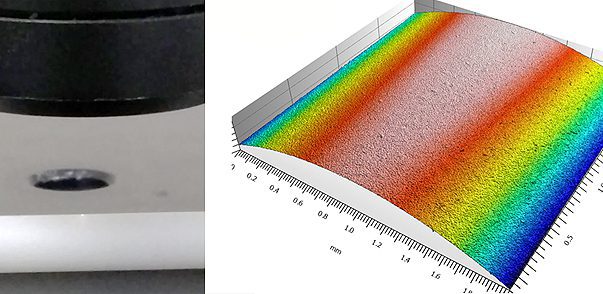
Polymeric Tube Finish and Dimension
Tubes made from polymeric material are commonly used in many industries ranging from automotive, medical, electrical, to many other categories. In this study, medical catheters made of different polymeric materials were studied using the Nanovea 3D Non-Contact Profilometer to measure surface roughness, morphology, and dimensions. Surface roughness is crucial for catheters as many problems with catheters, including infection, physical trauma, and inflammation can be linked with the catheter surface. Mechanical properties, such as coefficient of friction, can also be studied by observing surface properties. These quantifiable data can be obtained to ensure the catheter can be used for medical applications.
Mechanical Properties of Silicon Carbide Wafer Coatings
Understanding the mechanical properties of silicon carbide wafer coatings is critical. The fabrication process for microelectronic devices can have over 300 different processing steps and can take anywhere from six to eight weeks. During this process, the wafer substrate must be able to withstand the extreme conditions of manufacturing, since a failure at any step would result in the loss of time and money. The testing of hardness, adhesion/scratch resistance and COF/wear rate of the wafer must meet certain requirements in order to survive the conditions imposed during the manufacturing and application process to insure a failure will not occur.
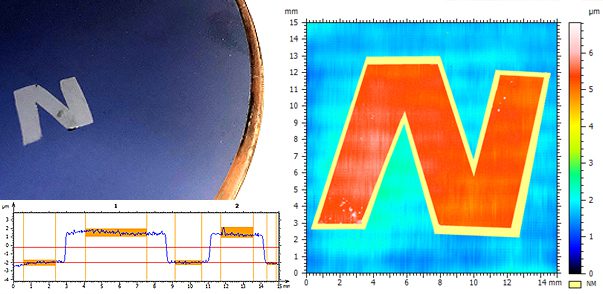
Wafer Coating Thickness Measurement Using 3D Profilometry
Wafer Coating Thickness Measurement is critical. Silicon wafers are widely used in the making of integrated circuits and other micro devices used in a vast number of industries. A constant demand for thinner and smoother wafers and wafer coatings makes the Nanovea 3D non-contact Profilometer a great tool to quantify coating thickness and roughness of just about any surface. The measurements in this article were taken from a coated wafer sample in order to demonstrate the capabilities of our 3D Non-Contact Profilometer.

The Worlds First Dual Load Controlled Tribometer
Irvine CA, February 28, 2018 – The Nanovea T2000 is the worlds first dual load controlled Tribometer providing vertical force oscillation at frequencies up to 150Hz. It combines advanced pneumatic technology with a state of the art linear electromagnetic stage to provide controlled loading from 1mN to 2000N during rotative and linear testing. Pneumatic is used from 5 to 2000N offering multiple advantages compared with age old spring/motor technologies used on other systems. With spring/motor technologies, the load sensor is typically placed behind the spring. This means that it is not measuring the actual variation of load applied on the surface during the test. The T2000 measures the load by a direct connection between the ball holder and the actual load cell. This ensures that the load measured is actually the load applied on the surface. The linear electromagnetic loading system of the T2000 can apply a vertical force of 0.2 to 20N at frequencies up to 150Hz. As an example, the normal load can be increased from 0 to100N with the pneumatic technology and then the linear motor can vary the load from 90 to 110N and up to 150 times per second. This gives the unique capability of superposing a control fatigue or vibration level to the main constant force applied by the pneumatic system. This electromagnetic linear stage can also apply directly very low loads from 1mN to 5N to complete the full range.
See Video Clip Discover more in the Application Note or visit Nanovea Tribometers
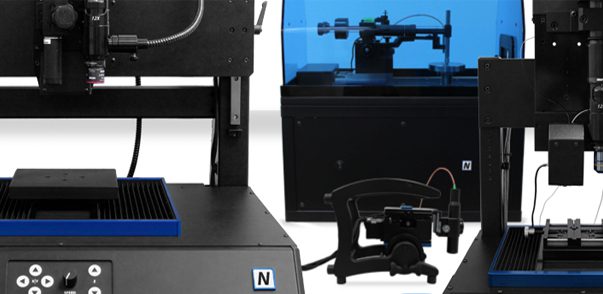
Nanovea 2018 Rebranding Visit Us at MRS Boston
Visit Nanovea @ MRS Boston, Nanovea will proudly have each instrument line on display! Including the completely redesigned PB1000 Mechanical Tester and the rebranded PS50 Profilometer and T50 Tribometer. Along with the new branding all instruments have received new staging for increased accuracy and acoustic dampening. Stay tuned, Nanovea has several other game-changing technical advancement coming soon! For more information please Contact Nanovea.









